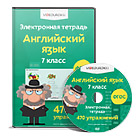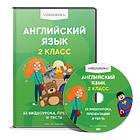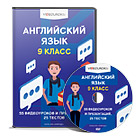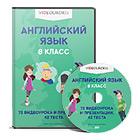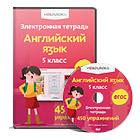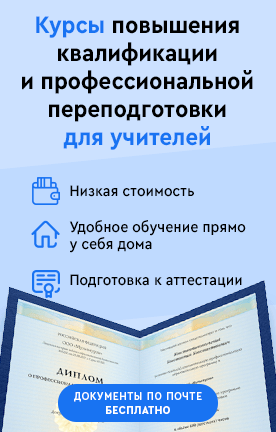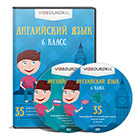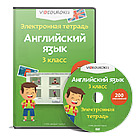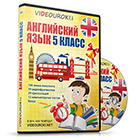Данная программа предназначена для учащихся старших классов, изучающих английский язык и имеющие основные знания об англоязычных странах. Использование страноведческой информации в учебном процессе обеспечивает повышение познавательной активности учащихся, расширяет их коммуникативные возможности, благоприятствует созданию положительной мотивации к предмету, даёт стимул к самостоятельной работе над языком.
- Меню
- Главная
- Дошкольное образование
- Начальные классы
- Астрономия
- Биология
- География
- Информатика
- Математика
- Алгебра
- Геометрия
- Химия
- Физика
- Русский язык
- Английский язык
- Немецкий язык
- Французский язык
- История
- Естествознание
- Всемирная история
- Всеобщая история
- История России
- Право
- Окружающий мир
- Обществознание
- Экология
- Искусство
- Литература
- Музыка
- Технология (мальчики)
- Технология (девочки)
- Технология
- Физкультура
- ИЗО
- МХК
- ОБЖ
- Внеурочная работа
- ОРК
- Директору
- Завучу
- Классному руководителю
- Экономика
- Финансовая грамотность
- Психологу
- ОРКиСЭ
- Школьному библиотекарю
- Логопедия
- Коррекционная школа
- Всем учителям
- Прочее
Создайте Ваш сайт учителя Курсы ПК и ППК Видеоуроки Олимпиады Вебинары для учителей
- Главная
- Английский язык
- Планирование
- Элективный курс по страноведению "English-speaking countries"
Элективный курс по страноведению "English-speaking countries"
Просмотр содержимого документа
«Элективный курс по страноведению "English-speaking countries" »
Пояснительная записка
Данная программа предназначена для учащихся старших классов, изучающих английский язык и имеющих основные знания об англоязычных странах.
Использование страноведческой информации в учебном процессе обеспечивает повышение познавательной активности учащихся, расширяет их коммуникативные возможности, благоприятствует созданию положительной мотивации к предмету, даёт стимул к самостоятельной работе над языком.
Страноведческое содержание этого курса направлено на обеспечение возможности изучать национальную культуру английского, американского, канадского, австралийского и новозеландского народов.
В основу этого курса положен коммуникативный подход к овладению всеми аспектами иноязычной культуры: познавательным, развивающим все виды речевой деятельности. Ведущим остаётся чтение и говорение.
Знакомство с культурой станы происходит путём сравнения и постоянной оценки уже имеющихся знаний и понятий с вновь полученными, со знаниями и понятиями о своей стране, о самих себе. Сравнивая себя и зарубежных сверстников, учащиеся выделяют общее и специфическое, что способствует объединению, развитию понимания и доброго отношения к стране, её людям, традициям.
Содержание курса тесно связано с такими предметами, как география, история и музыка.
Цель курса – содействие формированию социокультурной коммуникативной компетенции учащихся на основе базового владения английским языком; дальнейшее совершенствование языковых навыков и умений, различных видов речевой деятельности и форм речи (устной, письменной, диалогической и монологической),
Задачи курса:
создание условий для повышения информированности учащихся о странах изучаемого языка;
показать роль англо-говорящих стран, их культуры и экономики, а также значение иностранного языка в диалоге культур;
обогащение активного словаря учащихся необходимым запасом специальных терминов и понятий, связанных с данной темой;
формирование речевых навыков, обеспечивающих познавательно-коммуникативные потребности учащихся;
развитие умений собирать, систематизировать страноведческую информацию;
развитие умений анализировать и сравнивать сведения и факты родной и иноязычной культуры;
способствовать воспитанию у детей понимания и уважения к другой культуре;
способствовать обогащению внутреннего мира учащихся.
Структура и содержание курса.
Курс рассчитан на 34 часа и состоит из 11 разделов: вводного занятия (1 ч.), 8 тематических разделов (от 2 до 4 ч.), повторения (1ч.), итогового занятия (2 ч.).
Требования к уровню знаний.
По окончании курса учащиеся должны уметь:
выбирать информационно оптимальный вариант схематизированного преобразования информации содержащейся в тексте;
вести краткие записи прослушанного с опорой на ключевые слова, читать со словарем тексты страноведческого характера;
подготовить выступление на английском языке;
сопоставлять реалии родной и иноязычной культуры;
оппонировать и защищать свою позицию при беседе.
Учащиеся должны знать:
языковые нормы изучаемого языка;
об иностранном языке как средстве получения информации и развития личности.
Учащиеся должны применять полученные знания и умения на практике.
Учебно-тематический план
|
№ |
Тематический раздел | Кол-во часов |
| 1. | Вводное занятие. | 1 |
| 2. | География. | 4 |
| 3. | История. | 4 |
| 4. | Политическая система. | 4 |
| 5. | Экономика. | 2 |
| 6. | Система образования. | 4 |
| 7. | Культура. | 4 |
| 8. | Традиции и обычаи. | 4 |
| 9. | Спорт и отдых. | 4 |
| 10 | Повторение. | 1 |
| 11 | Итоговое занятие. | 2 |
| Всего уроков | 34 | |
Содержание курса
| №
| Название темы | Содержание | Время (ч.) | Формы работы |
| 1. | Вводное занятие. | Знакомство с содержанием курса. Выявление знаний учащихся. |
1 | Викторина “Знаете ли вы англоязычные страны?” |
| 2. | География. | Географическое положение. Административные деления. Территории, штаты. Столицы. Главнее города. Острова. Климат. Население. Основные достопримечательности.
|
4 | Рассказ учителя c использованием презентации Power Point. Работа с лексикой. Работа с картой. Чтение с выделением главной информации. Составление сравнительной таблицы. Выполнение тестовых заданий. |
| 3. | История. | Короли. Первые поселенцы. Х.Колумб. Освоение Америки. Рабство. Декларация независимости. Аборигены. Рождение Канады. Создание австралийского содружества. Маори. Основные войны. |
4 | Рассказ учителя c использованием презентации Power Point. Работа с лексикой. Просмотр видеофильма. Чтение текста с извлечением главного. Ответы на вопросы по прочитанному тексту. Составление и выполнение тестовых заданий. |
| 4. | Политическая система. | Монархия. Правительство. Парламент. Федеральное правительство. Конституция. Политические партии. Гимн. Герб. Флаг. |
4 | Рассказ учителя c использованием презентации Power Point. Работа с лексикой. Аудирование аутентичных текстов. Составление таблицы сравнения фактов политической системы Казахстана и англоязычных стран. Учебная дискуссия на тему “ Влияние людей на ход истории и развития страны”. |
| 5. | Экономика. | Сельское хозяйство. Промышленность. Торговые отношения. |
2 | Рассказ учителя c использованием презентации Power Point. Работа с лексикой. Чтение текста с выделением главного. Ведение записи. |
| 6. | Система образова- ния. | Основные ступени обучения. Типы школ. Профессиональное образование. Университеты. |
4 | Рассказ учителя c использованием презентации Power Point. Работа с лексикой. Составление таблицы сравнения систем образования Казахстана и англоязычных стран. Составление и выполнение тестовых заданий. |
| 7. | Культура. | Искусство аборигенов, эскимосов, маори. Архитектура. Живопись. Галереи. Музеи. Музыка и музыканты. Концертные залы Театр. |
4 | Рассказ учителя c использованием презентации Power Point. Работа с лексикой. Рассматривание репродукций. Прослушивание музыки. Обсуждение. Подготовка учащимися докладов и сообщений о представителях англоязычной культуры. |
| 8. | Люди. Традиции и обычаи. | Люди и их жилища. Праздники и фестивали. Церемонии. Национальные блюда. |
4 | Рассказ учителя c использованием презентации Power Point. Работа с лексикой. Выборочное чтение. Аудирование аутентичных текстов. Оформление поздравительных открыток. Викторина – проверка усвоения темы. |
| 9. | Спорт и отдых. | Национальные виды спорта. Зимние и летние виды спорта. Спорт сегодня. Пабы и клубы. Садоводство. Выходные. Каникулы. |
4 | Рассказ учителя c использованием презентации Power Point. Работа с лексикой. Поиски в учебном тексте ответов на поставленные учителем вопросы. Составление кроссвордов (парная работа). Выполнение тестов. |
| 10. | Повторение | Обобщение изученного материала. | 1 | Тест “Что ты знаешь об англоязычных странах?” |
| 11. | Итоговое занятие. | Итоговый контроль. Подведение итогов. | 2 | Презентация и защита проектов. |
Список использованной литературы:
Великобритания./Отв. ред. И.П.Фаминский. – М.: Междунар. отношения. 1990. – 160 с.
Кубарьков Г.Л., Тимощук В.А. 1000. Сборник новых тем современного английского языка. – Москва: ЗАО «БАО-ПРЕСС», ООО «ИД «РИПОЛ КЛАССИК», 2005. – 1184 с.
Рыбкина. Е.А. Новая Зеландия. СПб.: КАРО, 2001. – 192 с.
Сааринен Л., Рыбкина Е. Канада. Пособие по страноведению. СПб.: КАРО, 2000. – 238 с.
Томахин Г.Д. Англия. ИЯШ № 2, 1989, с.99;. № 3, 1989, с.87; № 5, 1989, с.75.
Томахин Г.Д. Северная Ирландия. ИЯШ № 3, 1991, с.88.
Томахин Г.Д. Уэльс. ИЯШ № 3, 1990, с. 90.
Томахин Г.Д. Шотландия. ИЯШ № 5, 1900, с.94; № 6, 1990, с.87.
Химунина Т.Н., Конон Н.В., Уолш И.А. В Великобритании принято так. Л.: Просвещение, 1875. – 295 с.
http://en.wikipedia.org
В данном приложении содержатся примерные практические материалы для проведения занятий к разным разделам данной программы.
Викторина «Знаете ли вы англоязычные страны?»
The official languages of Canada are:
English and Spanish
English and French
German and Italian
The capital of Australia is:
Sydney
Melbourne
Canberra
The national symbol of the small insular state of New Zealand is:
kangaroo
kiwi
Koala
The capital of the United States is:
New York
Los Angeles
Washington
Arnold Schwarzenegger is the governor of the state:
Colorado
Alaska
California
……..were the allies of the USSR during World War II
The USA and Great Britain
Italy and France
Japan and China
The princess called “The Queen of Hearts” is:
Margaret
Anna
Diana
During the period of colonization British Government sent to Australia people who were:
writers and poets
prisoners
farmers
The name of the man who wrote the text of the Declaration of Independence is:
Theodore Roosevelt
Thomas Jefferson
Jimmy Carter
The portrait of ………… we can see on 100$ banknote.
Bill Clinton
Benjamin Franklin
George Bush (sin)
The street in New York, centre of theatres, cabarets, cinema houses and other kind of entertainment is called;
Wall Street
Broadway
5th Avenue
The head of the United Kingdom of Great Britain and Northern Ireland is:
the President
the Prime Minister
the Queen
…………. was the youngest president of the USA.
George Bush (jr)
John F. Kennedy
Bill Clinton
Official currency of Great Britain is:
pound (sterling)
euro
English dollar
The USA consists of:
40 states
60 states
50 states
Famous Russian hockey players I. Larionov and V. Fetisov played in NHL Club called:
Miami Panthers
Detroit Red Wings
New York Lakers
First world underground appeared in:
London
New York
Moscow
Australian actress Kate Blanchet plays the part of the Queen:
Elisabeth
Mary
Victoria
………… was the first president of the USA.
Theodore Roosevelt
George Washington
Ulysses S. Grant
The state of Australia is:
a continent
a part of a continent
a peninsula
Russian businessman R. Abramovish is the owner of British football club called:
Manchester United
Chelsea
Arsenal
Bermudan triangle is situated in shore of:
Great Britain
The USA
Australia
The official residence of the Queen of Great Britain is:
the Tower
Westminster
Buckingham Palace
Department of Defense of the USA is called:
White House
The Pentagon
Empire State Building
Statue of Liberty in harbour of New York was presented to the USA by:
France
Great Britain
Germany
Tower Clock, the symbol of London is called:
Big Dan
Big Ben
Big Man
27. What part of Britain is called “land of song”?
a) England
b) Wales
c) Scotland
28. How many provinces and territories does Canada consist of?
a) 8 provinces and 3 territories
b) 10 provinces and 3 territories
c) 8 provinces and 2 territories
29. What is the longest river in Canada?
a) the Nelson river
b) the Yukon river
c) the Mackenzie
30. What is the capital of Canada?
a) Ottawa
b) Toronto
c) Montreal
Keys: 1b; 2c; 3b; 4c; 5c; 6a; 7c; 8b; 9b; 10b; 11b; 12c; 13c; 14a; 15c; 16b; 17a; 18a; 19b; 20a; 21b; 22b; 23c; 24b; 25a; 26b; 27c; 28b; 29c; 30a.
The Decline of Welsh
A hundred years ago 60% of Welsh people spoke Welsh. Now only 20% are Welsh-speaking. Why have the numbers fallen so quickly? Here are some of the reasons for the decline.
In the nineteenth century people thought that Welsh were an uncivilized language. If you wanted to be successful in life, you had to learn English, the language of the British Empire. So in many schools in Wales the children were forbidden to speak Welsh.
At the beginning of the twentieth century many English and Irish people moved to South Wales to work in the mines and steel works. They didn’t learn Welsh.
People, especially young people, moved away from the Welsh-speaking villages and farms to look for work in the big towns and cities, so the Welsh-speaking communities became much smaller.
In the 1960s and 1970s many English people bought holiday cottages in Wales. Most of them did not learn Welsh. This also pushed up the price of houses so that local Welsh-speaking people couldn’t afford them.
English comes into every Welsh home through the television, the radio, newspapers, books, etc. There are Welsh-language TV and radio stations, but far fewer than English ones. And now there’s cable and satellite TV, too – in English, of course!
The decline in the number of Welsh speakers has now stopped. But will numbers ever start to increase again? Young people are now learning Welsh at school, but if the small Welsh-speaking communities of North Wales die, then the Welsh language will probably not survive as a living language.
Read the article again and answer these questions:
1. What percentage of the Welsh population spoke Welsh in 1800?
2. Why were children forbidden to speak Welsh in school in the 19th century?
3. Why did many English people buy cottages in North Wales?
4. What part of Wales would you like to visit – north or south Wales and what part to live in?
5. What do you think if the Welsh language will survive?
Answers:
1. 60%
2. They thought that Welsh is an uncivilized language. If people wanted to be successful in life they had to learn English.
3. They bought cottages because the nature in north Wales is very beautiful and the price was not high,
4. I would like to live in South Wales because it is more civilized and to visit North Wales because of fresh air and charming nature.
5. I think, the Welsh language must survive because children learn Welsh.
Wales – the Land of Song.
Wales is a land of mountains and valleys. The highest mountain is Mount Snowdon in the Snowdonia National Park. It is a favourite holiday and hiking spot for the Welsh and English.
Wales has some wonderful holiday towns. And the beaches are beautiful.
This is Caernavon Castle, where the Prince of Wales received his title. There are castles everywhere in Wales. Most were built by the English to keep the Welsh under control. The English and Welsh have been very bad neighbours for centuries. The English have invaded Wales many, many times. And the Welsh invaded England. One of the ancient defensive structures in Britain is Offa’s Dyke. It runs along the border between Wales and England. It was built in the eighth century to keep the Welsh out of England, but it didn’t.
The most populated part of Wales is the south around Cardiff. This is where the coal is. In this part of Wales, coal has become part of everyday life. For two hundred years the Welsh have been mining coal in these valleys. Mining coal and singing. The Welsh take great pride in their choirs and their songs have traveled the world from the “Singing Valleys”.
The people take great pride in the Welsh language. It is taught in schools and has its television and radio stations. This sign on the border between Wales and England welcomes the visitor. “Croeso y Cymru”, it says, “Welcome to Wales”. But don’t worry, Welsh people speak English too!
This is the longest name in the world. It’s a railway station in Wales. Can you pronounce it?
Answer the questions:
What is Wales?
Where do people like to spend holidays?
Where did the Prince of Wales receive his title?
Why was the Castle built?
What is the main industry in South Wales?
Does the Welsh language differ from English?
Complete the sentences:
Wales is a land of… (mountains and valleys)
The highest mountain is …(Snowdon)
Castles were built by the English …(to keep the Welsh under control)
The English and Welsh have been …(very bad neighbours)
Offa’s Dyke was …(one of the ancient defensive structures)
It was built in the 8th century … (to keep the Welsh out of England)
The most populated part of Wales is …(the south around Cardiff)
The Welsh take pride in … (their choir and their songs)
The Welsh language is …(taught in schools and has radio stations).
True or false:
Wales is a land of mountains. (+)
The highest mountain is Кazbek. (-)
Snowdon is in Snowdonia National Park. (+)
The Welsh don’t like hiking. (-)
The Prince of England received his title in Caernavon Castle. (-)
Most Castles were built by the Welsh. (-)
The English wanted to keep the Welsh under control. (+)
The English and Welsh have been bad neighbours for centuries. (+)
The English have invaded Wales many times. (+)
The Welsh have invaded England. (+)
Offa’s Dyke is on the River Thames. (-)
Offa’s Dyke was built in the 20th century. (-)
The most populated part of Wales is the south around Cardiff. (+)
This place is where gold is. (-)
For 200 years the Welsh have been mining coal in these valleys. (+)
The Welsh are proud of their traditional choirs. (+)
The Welsh speak only English. (-)
They have their own TV and radio stations. (+)
Индивидуальные карточки: FIND LOGIC PAIRS
| 1) a land of | a) Wales |
| 2) the Prince of | b) Mountains and valleys |
| 3) beautiful | c) National Park |
| 4) Snowdonia | d) beaches |
| 5) bad | e) structure |
| 6) ancient | f) neighbours |
| 7) the eighth | g) century |
| 8) the most | h) pride |
| 9) every day | i) populated part |
| 10) great | j) life |
| 11) the Welsh | k) station |
| 12) its own | l) coal |
| 13) railway | m) language |
| 14) mining | n) TV and radio stations |
Тексты и задания по теме: «США: Регион Новая Англия»
1. Look through the questions and be ready to answer them while reading the text:
What does “Yankee” mean?
What state was there the first British settlement in?
When did they get to the shore of North America?
What was the first colony of British in North America?
Who were the Puritans?
How did the state New Hampshire (Rhode Island, Connecticut) get its name?
What are the characteristic features of the Yankee character?
Where did the famous pioneer Samuel Colt live?
What state is the birth state of Mark Twain?
What special role did the New England Yankees play in the United States history?
NEW ENGLAND
Over 350 years ago the first settlers arrived from Europe. The first settlers landed on the East Coast. They began clearing the forests and ploughing the soil. New England with its stony soil is poorly suited for agriculture but it has a lot of water power which can be used in industry.
New England includes six “Yankee States” – Maine, Massachusetts, Vermont, New Hampshire, Connecticut and Rhode Island. Some scholars suppose that “Yankee” may be the Dutch word “Jan”, the name from “John”, with a diminitive “ee” at the end. It was used as a nickname for the New England soldiers serving in the British army before the war of Independence. When the Americans first defeated the British at Concord 22 miles from Boston (April, 19, 1775) they began to call themselves “Yankees” and were proud of their name. The “Yankees” have a reputation for being honest but shrewd, realistic, practical, untalkative, thrifty and independent.
The “Yankees” like to speak about the special role that New England has played in United States history. The American Revolution began in New England, because the “Yankees” were among the strongest supporters of independence. In the 19th century it was New England “Yankees” who led the fight against slavery in America.
All the six New England states are alike in many aspects but have their own features.
MAINE
First sailors gave the shore its nickname “Down East” to denote that the state is down to Boston and “Down easters” are the people living in Maine. Four fifth of Maine is covered with forests diving the possibility of developing industry. Lumbering is the main occupation there. Hence its nickname is “Lumber State” and the “Pine-tree State”. Besides lumber, lobsters, canned sardines, potatoes and blue berries are the main products, as well as shoes, beet sugar and paper. Maine is widely known in the USA as the “Switzerland of America” or “Vacation Land”. Tourists come here to see the mountains and snowfalls.
NEW HAMPSHIRE
The name New Hampshire was given to the territory by Captain Mason in 1629. Before his coming to America he was governor of Portsmouth in Hampshire, England. The state is small but well wooded with many mountains, lakes and rapid rivers.
New Hampshire has 222 towns (nicknamed “little republics”), using the traditional town-meeting for administration. “Town-meeting” is either a general meeting of the inhabitants of a town or a meeting of qualified voters of a town. The town meetings elect “townsmen” who run the community. The official nickname of New Hampshire is the “Granite State” and the people there are called “Granite Boys”. New Hampshire is proud of its motto, “Live Free or Die”.
VERMONT
Vermont is noted for its green mountains and maple-sugar groves. It is generally, by simply translation of the original French name, called the “Green Mountain State” and “Vermonters, “Green Mountain Boys”. People are very proud of its nickname because it is associated with Green Mountain Boys in the past (the name of the army) when they fought against New York and won.
RHODE ISLAND
The name is derived from the Dutch which means “the red island”. Rhode Island has a few nicknames “Little Rhody”, due to its small territory, the “Southern Gateway of New England”, the “Land of Roger Williams”, for Roger Williams founded Providence Plantation when he was expelled from Plymouth Colony. New Port, a city in Rhode Island, became a fashionable summer home for the very rich.
CONNECTICUT
It got its name from the river, which was named by the natives and meant “the long river”. The state is a leader in producing helicopters, electronic goods, jet engines, nuclear submarines. The state is divided by the Connecticut River into two almost equal regions.
The nickname the “Nutmeg State” is used for Connecticut, because its people had the reputation of being so ingenious and shrewd that they were able to make and sell wooden nutmeg. Its business pioneers are revolver inventor Samuel Colt and rubber magnate Charles Goodyear.
Often called the “Insurance Capital of the World”, Connecticut’s capital Hartford is home for 40 firms.
A lot of tourists come here to visit a number of places, including the birth home of Mark Twain.
MASSACHUSETTS
The word Massachusetts is formed from two Indian words: “massa” meaning “great” and “wachusett” meaning “a mountain place”. Today a key New England state, Massachusetts was also one of the most important of the thirteen colonies. It was at Plymouth in 1620 that the Pilgrim Fathers landed. They were mostly Puritans, but they were not satisfied with the religious discipline in England. They wanted to “purify” the religion, they had very strict rules about church services and also about the way people lived. There is a story about a sea captain who had come back from a three-year voyage and kissed his wife on their doorstep, outside their house. The Puritans were indignant at such behaviour and publicly punished the captain. They demanded reforms in doctrine and worship. For some time they lived in Holland and in the summer of 1620 they boarded the ship Mayflower at Plymouth and sailed for America.
It so happened that two months later the little ship dropped anchor off the Coast of Cape Cod, hundreds miles from the place they wanted to land. The colonists named their settlement Plymouth, and Plymouth Rock is the place where the Pilgrims are said to have stepped ashore.
During the Civil War the “Plymouth Pilgrims” was a nickname used in the South for northern soldiers. “Plymouth Colony” was the name of the colony established in southeastern Massachusetts by the Pilgrim Fathers. Later it became known as the “Old Colony”, and modern Massachusetts is often referred to as the “Old Colony State” or the “Puritan State”. The people of Massachusetts are often called “Blue Noses”. The word means one who is very puritanical or inquisitive. Massachusetts is also nicknamed the “Baked Bean State” and its people “Baked Beans” or “Bean Eaters” in allusion to the Puritan State, when baked beans were the regular Sunday meal.
The official nickname of Massachusetts is the “Bay State”, because it was originally the colony of Massachusetts Bay. The arrival of the Pilgrims at Plymouth was accidental. They were going to reach the Hudson River, but because of a storm they landed at Plymouth Rock. Before landing they drew up an agreement for government of the Plymouth Colony, called the “Mayflower Compact”. It was based on the principles of Puritanism. They insisted on religious freedom for themselves, but denied it to the others. Roger Williams and Thomas Hooker were settled in Rhode Island in 1637. Puritan oppression reached a terrible climax with the infamous Salem witch trials at the end of the 17th century. In 1692 in Salem Village several hundred persons were accused of witchcraft. Many were convicted, nineteen were hanged. Later most people regretted having lost their heads.
2. What state does it refer to?
The first settlement in North America was founded there.
Its name is derived from the Dutch word “the red island”.
It is a fasional summer home for the rich.
Its people are called “Blue Noses”.
Towns in the state have their own form of governing.
It is called the “Insurance Capital of the World”.
The state is rich in forests. Samuel Colt lived there.
It is known in the USA as the “Switzerland of America”.
Its motto is “Live Free or Die”.
3. Complete the following sentences using information from the text:
New England includes…
New England with its stony soil…
Maine is widely known in the USA…
The state is small but well…
New Hampshire is proud of …
Vermont is noted for its …
Rhode Island has a few nicknames…
The state is a leader in producing…
The word Massachusetts is formed from…
During the Civil War the “Plymouth Pilgrims”…
4. Express the same in English to learn more about New England:
Первые поселенцы высадились на восточном побережье.
Первые фабрики были в Новой Англии. Они производили хлопковую одежду.
Рыбная ловля была важна на северо-востоке.
Особенный характер янки Новой Англии обусловлен историей и географическим положением места.
Пуритане покинули Англию, потому что они были не согласны с некоторыми учениями английской церкви.
Территория Род-Айленда, самого маленького штата составляет 3,144 кв. км.
Столица Род-Айленда – Провиденс.
5. Choose any state you like and describe it such a way that the others could guess it.
Тема «Австралия»
GEOGRAPHY
Australia is located southeast of Asia, and is the only country in the world to occupy a single continent. It is bordered by the Pacific Ocean, the Indian Ocean, the Southern Ocean, the Tasman Sea, the Coral Sea and the Arafura Sea. The nearest country is not New Zealand and Australia or Oceania. The Australia continent and the nearby island of Tasmania, form the sixth largest country on earth, with a total area of 7,686,850 sq km. This large area is populated by only 19 million people, making Australia the most sparsely populated continent after the Antarctica. Australia continents of six states and two territories.
Area of Australia’s States
| New South Wales | 802,000 sq km |
| Victoria | 228, 000 sq km |
| Queensland | 1,727,000 sq km |
| South Australia | 984,000 sq km |
| Northern Territory | 1,346,000 sq km |
| Western Australia | 2,526,000 sq km |
| Tasmania | 68,000 sq km |
| Australia Capital Territory | 2,400 sq km |
The Northern Territory, appropriately situated in the north, is a tropical area that runs into desert in the south. The Stated is very sparsely populated, and stations (huge farms). In the extreme north lies the biggest city, Darwin. It is not a big city by Australian standards, but Darwin is the main gateway to this vast state, and is also the closest city to Asia.
Queensland is situated in the northeastern corner of Australia, and lies in the tropical and subtropical climatic zones. The largest city is Brisbane, which has a population of 1.2 million people.
New South Wales to the south of Queensland is situated in the Subtropical to Temperate climatic zones.
This state is Australia is most populated, and is also home to the biggest city in Australia. That city is Sydney and is considered by many to be the most beautiful big city in the world.
The New South Wales coastline is blessed with many superb beaches, and contains many famous surf breaks such as Byron Bay.
Australia Capital Territory, which is home to the nation’s capital city Canberra. Canberra was planned before the first stone was laid, and was chosen as the site of the new capital city as a compromise between Sydney and Melbourne, who both competed for this title.
Across the New South Wales border lies the state of Victoria. Victoria is the smallest mainland state in Australia, but has the highest density of population. Australia’s second largest city, Melbourne is located near the south coast of the state.
If you continue west from Victoria you will eventually cross the border into South Australia.
South Australia is bordered by the Southern Oceanic and other mainland states. South Australia is sometimes referred to as the driest state in the driest continent on earth.
Toward the west of South Australia lies Western Australia. This state covers one third of the continent and is approximately five times the size of Texas. Yet there are only about 1.4 million people here. This makes Western Australia the most sparsely populated of all states, especially when you consider that over 1 million people live in the state’s capital city, Perth.
The only State in Australia that is not found on the mainland, is south of Victoria, and sits on the same latitude as central New Zealand. The State is roughly the size of Ireland, or Sri Lanka, and is one of the most mountainous islands on earth. Tasmania’s climate is temperate and the island is covered in wilderness. In fact, about one quarter of Tasmania is protected wilderness.
Australia is the lowest, flattest and, apart from Antarctica, the driest of the continents.
From north to South Australia spans 3,200 kilometres. From east to west, Australia’s widest point is approximately 4,000 kilometres. Australia’s coastline measures approximately 36,800 kilometers.
‘The Dry Continent’
The climate in Australia is varied and ranges from tropical to sub alpine.
Australia is also the driest inhabited continent on earth, but the eastern seaboard where the majority of the population is concentrated, is a lush and fertile area, with a climate ranging from temperate to tropical. The main mountain range is known as the Great Dividing Range has an area known as the Snowy Mountains, or otherwise known as the Australian Alps. This area actually receives snow than Switzerland, and is the only area suitable for skiing in Australia.
Most of the continent recieves more than 3,000 hours of sunshine a year, or nearly 70% of the total possible.
Australia also contains many pockets of tropical and temperate rain forest on the eastern coast, but the predominate forest in Australia is Eucalypti forest.
The southwest corner of Western Australia has a Meditarranean climate and the Northern regions of this continent have areas of Rainforest and below that are large areas of savanna grasslands. Tasmania, the island state in the south has large areas of temperature wilderness and steep mountains.
Many parts of Australia have scanty and irregular rainfall. Only where rainfall is plentiful and reliable one can see tall trees are the blue gums of Tasmania, the Big Trees of eastern Victoria, which reach a height of 300 feet. Other tall trees grow along the rainy east coast and many other small trees and plants crowd the forest here, including the ferns and creepers.
The commonest trees of Australia are the eucaliptus, of which there are over 500 kinds.
Some Australian trees and plants produce hard woody fruits and seeds.
Australia has 20,000 species of plants and brilliant wild flowers such as the red and green kangaroo paw. The continent has many species eucalypti or gum trees. Many of the trees lose their bark not leaves and many flowers.
Nature fauna in Australia are protected and managed by state and territorial governments.
The climate of Australia varies greatly. The climate ranges from tropical (monsoonal) in the north to temperate in the south. The tropical region, which includes about 40 percent of the total area of Australia, has only two seasons: a hot, wet season with rains falling mainly in February and March, during which the northern and north-eastern coast have an average annual rainfall of 1524 mm in parts of Queensland overade annual rainfall exceeds 2540 mm.
People of Australia
Australia’s aboriginal inhabitants arrived about 40,000 years ago. Their technical culture depended on wood, bone, and stone tools and weapons, their spiritual and social life was highly complex. Most spoke several languages. Aboriginal population density ranged from one person per square mile along the coast to one person per 35 square miles in the arid interior. Today, tribal aborigines lead a settled traditional life in remote areas of northern, central, and western Australia. For generation, most settlers came from the British Isles, and the people of Australia are still predominatly of British or Irish origin. Since the end of World War II, however, the population has more than doubled; non-European immigration, mostly from the Middle East, Asia and Latin America, has increased significantly since 1960. In 1995-1996, Australia accepted more than 99,000 regular immigrants.
Religion
During the 1800s, European setters brought their traditional churches to Australia. At the 1996 Census, Australian religious affiliations were 27% - Catholic, 22% - Anglican, 22% - other Christian denominations and 3% non-Christian religions, with some 25% uncommitted or professing no religion.
On the 10th January, 2001 at 06:37:28 (Canberra time), the resident population of Australia was projected to be 19,272,053.
Aborigines
The world Aborigine is derived from Latin and means “from the beginning”. This is the name given to the native Australians by the Europeans. The first human inhabitants of the Australia were the Aborigines. They are a dark-skinned people belonging to the Australoid group. They may have walked and sailed here from Asia. They gathered fruits, nuts and yam, which they ate. In Melbourne and Sydney, the sparse Aboriginal population includes many militants. The whites – who have little experience of Aboriginal traditions an appealing theoretical alternative to western society’s moneymaking and rule by the clock. And public policy tends to be generous towards Aboriginal causes and claims.
Facts & Figures
| Languages | Ehglish |
| Ethnic groups | Caucasian - 92%, Asian – 7%, |
| Grouth rate | 0.93% |
| Birth rate | 13.47 births/1,000 |
| Death rate | 6.89 deaths/1,000 |
| Fertility rate | 1.82 children/woman |
| Male |
|
| Life expectancy | 76 |
| Female |
|
| Life expectancy | 82 |
| Infant |
|
| Mortality rate | 5.26 deaths/1,000 live births |
Australian people accept guests with openness and cordiality. It is just characteristic of their life there.
In Australia, everyone is allowed to visit the building of the State Parliament, for example. Enormous posters invite everyone to visit the local museums of space exploration.
Also surprising is the way the Australian people treat each other. White people go to demonstration to protect the rights of aborigines (who are seldom seen on the streets of big cities) – in general, their total number is about 2% of the population of the continent. People on the train, who are really far from agriculture, gladly welcome clouds as possible rains are a blessing to farmers. The harvest there depends on the amount of precipitation, since Australia is the driest continent in the world.
It’s uncommon to surround a house with a high fence, with the exception of the Prime-Minister’s residence (which is strictly guarded). It is also a tradition to appear with a smile on your face in public, a common thing for Americans and probably to some extent for English people as well. And if you need some help, and then even people whom you don’t know well will be glad to help you without saying too much. ” That’s what we are here for” is the key phrase to understanding Australia.
People live there as if to help and protect each other and maintain the land of their ancestors in its unique and indescribable beauty. Of course, one can speak a lot about the difficulties of living in the southern hemisphere, but to experience it all, one would need live there longer as an ordinary citizen, rather than as a visitor.
Australia townspeople are bright and sunny, full of light and surrounded by the care and warmth of people’s relationships, even if it’s a bit idealized there.
Animals
The dry, desert-like plains of the Australian outback cover more than two-thirds of the continent. Much of the region receives less than 250 mm of rainfall a year. Although the rains may come at any time of the year, there are often long periods of drought, which make it difficult for animals to survive.
Many of the animals avoid the heat of the day by staying in their burrows, since it is cooler and damper underground. Some small animals sleep underground right through the hottest summer months. This is called aestivation. Many outback animals can survive with little or no water. Their bodies are adapted to store water from their food and to lose very little water in their urine. A number of animals have long back leas to help them more rapidly and find what little food is available.
There are many animals and birds in Australia:
Koala (length: 80 cm);
Long jumper. Red kangaroo (height: 2m; tail: 1m);
Wild dog. Dingo (height at shoulder: 50 cm; length: up to 90 cm);
High-speed runner emu: (height: 2m);
Huge burrow (height at shoulder: 45cm);
Huge lizard (length including tail: up to 2,4 m);
Spiny coat (length: 50 cm; spines: 6 cm);
Silky killer (length: 3 cm);
Numbat (body length: up to 30 cm; tail: up to 20 cm);
Raggiana’s bird of paradise (body length: up to 95 cm; tail feathers: 50 cm) and many others.
Some Important Dates of Early Australian History
1605-06 First Dutch sighting of the coast
1616 Arrival of Dutch ship Ecndracht at western coast
1642 Abel Tasman’s discovery of Van Diemen’s Land (Tasmania)
1688 William Dampier’s landing on north-west coast
1770 Captain Cook’s discovery of New South Wales
1788 Foundation of first settlement (Sydney) by Governor Arthur Philip
1851 Victoria became a separate colony
1851 Discovery of gold in Victoria
1854 Battle at the Eureca Stockade
1859 Queensland became a separate colony
1883 Comletion of railway between Victoria and New South Wales
1889 Comletion of railway between Sydney and Brisbane
1898 William Farrer’s appointment as government wheat experimentalist. New South Wales
1901 Establishment of the federal Commonwealth of Australia
Why is the Year 1901 Important in the History of Australia?
On January1, 1901, the Commonwealth of Australia came into being. Before this, Australia consisted of a number of separate colonies. By the Commonwealth Act of 1900, the colonies became a federation. The formation of the commonwealth marked the beginning of Australia as a full nation.
The History of Australia Day – 26 January
26 January 1788, the historic landing of the First Fleet at Sydney Cove.
26 January 1818, Governor Lachlan Macquarie ordered a 30-gun salute to commemorate the thirtieth anniversary of foundation. He also declared that 26 January be a public holiday.
Until Federation in 1901, 26 January was celebrated only in New South Wales as Anniversary Day. There it commemorated the beginning of European settlement at Sydney Cove. Victoria, Queensland and Tasmania celebrated their separation from the mother colony, New South Wales; South Australia and Western Australia were proud of their independent foundations.
During 1935, Premiers from all States of Australia met together and made an agreement that Australia Day would be 26 January, and that form 1936 an annual public holiday would be declared on the Monday closest to that date. They decided that the agreement that this agreement would remain unchanged for at least the next fifty years.
In 1980, the National Australia Day Committee had promoted Australia Day as a time for celebration and awareness of national pride. In 1980, 30 local community committees held official Australia Day celebrations. By 1982 there were approximately 600 local communities holding celebrations.
Government
The system of government was based on a written constitution approved by the British Parliament and reflected the political traditions of Europe and North America. The Australian government is given the power of low by being elected by a majority, of the people using the secret ballot.
Australia is an independent sovereign nation within the Commonwealth. Queen Elizabeth II is formally Queen of Australia. The representative of the English queen is the formal head government structure.
The Australian Federation has a three-tier, Federal, State, and local, system of government. It is historically based on a two system, the party or coalition of parties with the majority in the House of Representatives forming the government.
The Australian Parliament and government are responsible for all matters of national interest. Six state governments complement activities of the national government on a state level. Parliamentary elections are conducted by a statutory electoral office, which is part of the permanent. Four political parties are represented in the Australian Parliament – the Liberal Party, the Australian Labor party, the National Party of Australia and the Australia Democrats.
The Australian National Flag
The Australian flag is major national symbol, both within Australia and overseas. It belongs to equally to all Australians and anyone in Australia may fly it. The Australian National Flag has a spacious blue background and depicts three symbols: the Commonwealth star, the stars of the Southern Cross and the Union Flag. The Commonwealth star has seven points, one for each state and one for the additional territories.
The Australian Faunal Emblem: the Emu
The emu appears with the kangaroo on Australia’s Coat of Arms. During pre-historic times in Australia there were giant emus called Genyornis.
Economy
Australia has a prosperous western-style capitalist economy, with a per capita GDP at the level of the highly industrialized West European countries. Rich in natural resources, Australia is a major exporter of agricultural products, consumer goods and equipment, minerals, metals, and fossil fuels. The government is pushing for increased exports, so that a downturn in a world commodity prices can have a big impact on the economy. The government is pushing for increased exports of manufactured goods, but competition in international markets continues to be severe. The country buys abroad farm equipment, office equipment and other goods.
Cultural Growth
Australians are world famous for their love of sport, but they are also enthusiastic supporters of the arts and the communications industries.
Australian cultural achievements are becoming well known internationally through the awards gained by films and literature, and the reputation of touring Australian groups.
Government support has been an important factor in developing the arts.
The Australian Chamber Orchestra, established 20 years ago, become a permanent orchestra five years ago and now tours overseas several times a year.
Government-supported television and radio channels play an important part in artistic and cultural development, with the Australian Broadcasting Corporation (ABC) receiving $515.1 million from the Federal Government in 1994-95 and the Special Broadcasting Service (SBS) $75.7 million.
Aboriginal Arts
Aboriginal art was little known and appreciated until recent years.
Indigenous dance and music have been introduced to national and international audiences through Federal Government support.
Aboriginal and non-Aboriginal musicians and combines traditional and modern Aboriginal musical styles, has also proved popular in Australia and overseas. Aboriginal and Torres Strait Islander writes like Sally Morgan and Jack Davis, and the late Kevin Gilbert and Oodgeroo Nunuccal, are well known throughout Australia.
The Federal Government has decided that it will establish a gallery of Aboriginal Australia in Canberra to provide a national perspective on indigenous cultures.
Aboriginal Music
For many thousands years, music has played a very significant part in the life of Australia Aborigines. Song and dance are vital in many rituals and ceremonies, and are often used to dramatize and illustrate a story. The actions of birds and animals are imitated. Children enjoy imitating and learning the dances of their ciders. The word ‘corroboree’ is well known and is often used as the name for an Aboriginal ritual dance.
Аутентичные языковые материалы по теме "Природа Австралии"
I. Reading
Read the text and try to guess: where has this text come from?
A leaflet about a guided tour?
A book about one of the greatest cities in Australia?
A geography book?
Nature at our Doorstep
Sydney is Australia’s largest city, with over four million residents. It covers more than1500 square kilometers – one of the largest city areas in the world. From the famous beaches to the distant Blue Mountains, Sydney’s suburbs spread out in a network of houses, roads, shopping centers and office blocks. But if you look at a satellite photo of this booming metropolis, the dominant colour is green.
National parks have much to do with this. From any high point in the city you’ll see them – large areas of protected bushland, enveloping and giving life to Sydney. Even in the metropolitan area, national parks can be found in many places – beside the rivers, among the houses, around the harbour. The largest wilderness area in New South Wales – in Wollemi National Park – begins barely 70 kilometres from the CBD.
Sydney’s environmental wealth is no accident. It’s the legacy of more than a century of conservation efforts by concerned citizens, conservation groups and the state government. Since the creation of Royal National Park – the world’s second national park – in 1879, Sydney’s parks and reserves have been growing in number. They are now part of a large network of some 500 protected areas across New South Wales, working towards the conservation of the state’s amazing natural diversity.
Managed by the New South Wales National Parks and Wildlife Service, Sydney’s national parks exist for a variety of reasons. They give Sydneysiders a chance to relax and enjoy themselves in the great outdoors. They provide habitat for the countless animals and plant species that are native to the region. And they protect Sydney’s cultural heritage – Aboriginal sites, colonial relics, and monuments of the often troubled history that Aboriginal and non – Aboriginal people share.
If you’re in Sydney for the Olympics and Paralympics, you won’t be getting into the spirit of these Games without a visit to a national park. Of course there are many other parks to experience throughout NSW. They include the World Heritage-listed rainforests of the north coast, the red desert landscapes of the far west, and the fragile alpine herbfields of the Snowy Mountains. If you are interested in traveling beyond Sydney to discover more of the state’s huge variety of landscapes, we can help you plan a more extensive trip. Welcome to the sandstone, water and bushland that lie at the heart of this Olympic city!
According to the text which of the following is true?
the dominant color of the booming metropolis is
green
yellow
brown
black
from any high point in the city you can see
a network of houses, roads, shopping centers and office blocks
large areas of protected bushland
countless industrial sites
historic defence installations
there is a large network of
200 protected areas
100 protected areas
500 protected areas
from any high point in the city you’ll see
distant Blue Mountains
large areas of protected bushland
the Sydney Harbour
NSW Parks include
the World Heritage-listed rainforests of the north coast
the red desert landscapes of the far west
the fragile alpine herbfields of the Snowy Mountains
Give the reasons for
existence of conservation groups and their efforts to protect Sydney’s environmental wealth
existence of Sydney’s national parks
According to the text which two of the following statements are wrong? Find them.
Sydney’s environmental wealth is an accident.
The area of Sydney is one of the largest city areas in the world.
Sydney’s parks give Sydneysiders a chance to relax and enjoy themselves.
Since the creation of RNP the number of Sydney’s parks and reserves has remained the same.
There is a large network of parks in NSW.
Choose the information which was unknown to you.
II. Vocabulary drill
1. Match the words and expressions from the text with their definitions:
| The population of a city or a town To occupy a territory Situated at some distance from a place A number of objects situated in a certain way and connected with each other Nature reserves protected by the government An area where the natural habitat is preserved A rich variety of plant and animal species Groups of volunteers who aim at preserving the environment A resident of Sydney Rare things inherited from the times when Australia was a British colony To feel the atmosphere | to get into the spirit relics residents a network protected bushland to cover wilderness area environmental wealth natural diversity distant a Sydneysider conservation groups |
III. LISTENING
You will hear a conversation between a tourist and a tourist office person. Why have many tourists from around the world always been eager to visit Sydney National Park? Say whether the statements below are true or false.
T-tourist O.P.-office person
O.P.- Good morning. Welcome to Sydney Harbour National Park. You can enjoy spectacular views of the Harbour Bridge and Opera House from prominent headlands.
T: - Yes, I’d like to visit Harbour National Park and to see native plants and animals for a start.
O.P. - Great choice. Sydney Harbour National Park is a natural haven in the heart of a busy city. It protects precious remnants of the bushland that once covered the harbour foreshores.
T.- That sounds nice. I hope the wildlife is rich there.
O.P.- Sure. Long-nosed bandicoots, native water rats and even little penguins all live elsewhere in the park.
T.- I hope to see important cultural heritage.
O.P.- Yes, you will. Around 70 Aboriginal sites have been found in the park, from rock paintings to axe-grinding grooves. Some are many thousands of years old.
T.- I’ve heard the life of local Aboriginal people was tragic.
O.P- Yes it was. During the construction of Sydney, almost all local Aboriginal people were either forced out of the area, or killed by European diseases and guns. Besides, you can also explore many historic defense installations. I’m sure you’ll be amazed at what you find.
Sydney Harbour National Park is a natural haven in the heart of a busy city.
Long-nosed bandicoots, water rats and little penguins can be found in the South America as well.
You can find nearly 70 Aboriginal sites in the park.
There still remain a lot of local people living in Sydney.
You can explore many historic defense installations here.
IV. USE OF ENGLISH
Read the texts. Use the words given in capitals at the end of each line to form a word that fits in the space in the same line.
| GREEN AND GOLDEN BELL FROG 1. As its name suggests, the --- green and golden bell frog’s upper body is a jumble of vivid greens and almost --- golds. However its croak could be described as “ bell-like” - --- have likened it to the sound of a motorbike --- gears. This once widespread frog is now limited to a series of isolated --- population including one near the Sydney Olympic site in Homebush. LITTLE PENGUIN 2. --- of all penguins, the little or fairy penguin grows to 45 cm tall. The only known colony of these ---- seabirds in mainland NSW is in a --- cove of Sydney Harbour near Manly. WATER RAT 3.The television --- “Water Rats” may be set in Sydney Harbour but for years these handsome 30-cm native rodents were hard to find. The ---- of water quality in the harbour has --- to increases in the numbers of aquatic insects, fish and mollusks the rats feed on. In 1999 a ---population of water rats was ---- on Goat Island in Sydney Harbour National Park, providing a valued --- to be harbour’s biodiversity. EASTERN GREY KANGAROO 4. When European --- first saw eastern grey kangaroos around Sydney many thought the joeys --- carried by their mothers had been born in the pouch. The real story is a little --- complicated. As with all marsupials, joeys are born --- and tiny. They must drag themselves through their mother’s fur and into her pouch, where they attach themselves to a teat and continue to grow. YELLOW-BELLIED GLIDER 5 --- possums “ fly” from one tree to another on a sheet of skin which stretches between their forepaws and ankles, --- their long furry tails as rudders. The yellow-bellied glider best ---of the family can travel over 1000 metres in one leap. SUPERB LYREBIRD 6. In the theatre of the forest floor, few can match the --- of the male superb lyrebird. Like all lyrebirds, he is able to mimic almost any sound --- other birds and animals, whistles and car alarms. However he also --- a spectacular visual display, with a lyre - ---- tail which he fans over his head to attract females. SHORT-BEAKED ECHIDNA 7. Together with the platypus, echidnas are the --- only living monotremes, or egg – laying ---. The short-beaked echidna lives all over NSW, wherever termites – their main food source – can be ---. Their long, … snout is an amasingly sensitive organ, used to search for food and detect danger. FRILL-NECKED LIZARD 8. Mascot of the Sydney Paralympics, the frill – --- lizard capable of scaring off even large --- with its fanned – out display. However the show is all bluff – like all other Australian lizards, this reptile is --- harmless. | endanger
small
serie settle be glide
talent
world neck |
Fill in the table
| name of the bird, animal |
|
| habitat |
|
| appearance |
|
| characteristic features |
|
V. WRITING
This is an extract from a letter you have received from your pen friend :
…We’re doing a project at school about different Sydney Parks, Australia’s natural diversity, its birds and animals. Could you write me a short report about Australian wildlife to include in the project?
Write as soon as you can.
I wish you luck in your exams.
John.
VII. SAMPLE LETTER
Australia’s plants and animals are special. Most of them occur nowhere else and our networks of protected areas are crucial for their long-term survival. Some protected areas can cope fairly easily with different types of human activities. However, the environments of others are more fragile, and their plant and animal populations can take a long time to recover even from the smallest amount of human interference.
National parks are relatively large areas protected for their unspoiled landscapes and their native plants and animals. They are set aside for public education and recreation, and usually offer visitor facilities. Situated near large population centers, they offer open space and recreational and cultural opportunities for urban residents. Marine parks are unique and outstanding marine areas, set aside to conserve aquatic plants and animals. Historic sites can include buildings, objects, monuments or landscapes. They have national cultural importance, and are generally open to visitors.
Use of English: endangered, metallic, listeners, changing, coastal, smallest, flightless, secluded, series, improvement, lead, healthy, discovered, contribution, settlers, being, more, undeveloped, gliding, using, flyer, talents, including, boasts, shaped, world’s, mammals, found, hairless, necked, predators, largely.
Задания по теме «Австралия»
1. Now let’s start our competition. You task is to put the missing letters. Thank You.
|
| Key: |
2. Read the sentence and say if it is try ore false.
1) Canberra is the home of Australia’s government. (T)
2) Sydney is the capital of Australia. (F)
3) Sydney is the largest and the oldest city in Australia. (T)
4) Canberra is a “cyclist’s paradise”. (T)
5) Sydney Opera House is one of the greatest examples of 20th century. (T)
3. Complete the sentences:
Australia was discovered in ______ by ________.
The discoverer of Australia claimed it for ___________.
The first settlers were ________________.
People rushed to Australia because _________.
Australia’s is located in __________ hemisphere.
The hottest month in Australia is ________.
About 70 per cent of the population live in the __________.
________ is the capital of Australia.
The Olympic Games were held in Sydney in ___________.
If in London it’s 8 a.m., in Sydney it is _______.
People in Australia speak ________.
Australia became independent in _____.
Key:
1770, James Cook
the king of England
convicts
gold was discovered there
the southern
January
10 largest cities
Canberra
2000
10 p.m.
English
1931.
4. What is wrong in the sentences?
Australia is situated south of Asia between the Pacific and the Atlantic Oceans.
Canberra is the capital of Australia and the biggest city of Australia.
Aborigines now comprise only 50 per cent of the population.
Key:
Australia is situated south of Asia, between the Pacific and the Indian Oceans.
Canberra is the capital of Australia, but it isn’t the biggest city.
Aborigines now comprise only 1,5 per cent of the population.
5. Write the names of the territories on the map:
Western Australia
Northen Territory
South Australia
Queensland
New South Wales
6. Translate the sentences into English – first read the Russian variant, then – the translation.
Большая часть населения – англичане по происхождению. The population is mainly English in background.
Английский – основной язык, на котором говорят австралийцы, но один из пяти австралийцев также говорит на итальянском, греческом, арабском, китайском или испанском. English is the main language spoken, but one in five Australians speak also Italian, Greek, Arabic, Lebanese, Chinese or Spanish.
Средиземноморский климат, галереи, музеи, архитектура и парки привлекают туристов в Сидней. Mediterranean climate, galleries, museums, architecture and parks attract tourist to Sydney.
7. Answer the questions:
What is the official name of the country? (The Commonwealth of Australia.)
When was the Commonwealth of Australia formed? (In 1901.)
What kind of state is Australia? (Constitutional Monarchy.)
What is the capital of Australia? (Canberra.)
Who is the Head of State? (Queen Elizabeth 2 of Great Britain.)
Who is the Head of State? (Prime Minister.)
How many states and territories are there in Australia? (6 and 2.)
What is the population of Australia? (More than 18 million people.)
Which is the official language in Australia? (English.)
What colour is the flag of Australia? (It is blue, red and white.)
Which are the national colours? (Green and gold.)
What animals can be seen on Australia’s coat-of-arms? (The Kangaroo and emu.)
Which is the hottest month in Australia? (January.)
What are the main ports in Australia? (Sydney, Melbourne, Adelaide, Brisbane and Perth.)
How long does kangaroo live? (10 – 15 years.)
Can emu fly? (No, it can’t.)
What are Australian’s best-known animals? (The Kangaroo, Koala, the dingo.)
When is spring in Australia? (From September to November.)
What is the main occupation in Australia? (Agriculture.)
What does Koala eat? (Leaves of eucalyptus.)
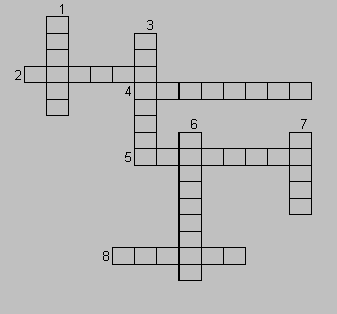
8. Do the crossword puzzle.
Across:
2. Tropical climate. Population 70 000. Capital of Nothern Territory.
4. Tropical climate makes this city a year-round vacation place.
5. An industrial city. Population about 1 million.
8. Australia’s oldest and largest city.
Down:
1. Capital of Australian island-state of Tasmania. Cold winters.
3. Capital of Australia. Hosted 1956.
6. 2nd largest city of Australia. Hosted 1956 Olympics.
7. It has one of the best climates in Australia. Capital of Western Australia.
Key:
Hobart.
Darwin.
Canberra.
Brisbane.
Adelaide.
Melbourne.
Perth.
Sydney.
9. The last task. Choose the right answer.
1. What is the capital of Australia?
Sydney;
Melbourne;
Canberra.
2. When did Europeans settle in Australia?
1488;
1788;
1492;
1901.
3. Which is/ are a popular Australian animal(s)?
Koala;
Kangaroo;
Emu;
All of the above.
4. Which two animals can you see on the Australian coat of arms?
Kangaroo and Dingo;
Koala and Parrot;
Kangaroo and Emu.
5. Which city is Australia’s oldest and largest?
Sydney;
Melbourne;
Canberra.
6. Who are the Australian natives?
Eskimos;
Aborigines;
Indians.
7. Who discovered Australia?
Christopher Columbus;
Captain Cook;
Lewis and Clark.
8. Australia is not a (an)
Country;
Island;
City;
Continent.
9. Approximately how many nationalities live in Australia?
200;
20;
75;
5.
10. What is the official language in Australia?
French;
German;
English.
11. In which season do Australians celebrate Christmas?
Spring;
Summer;
Autumn;
Winter.
Первые племена и народы на территории Британии.
Тексты с заданиями на английском языке
UNIT 1 THE DAWN OF BRITISH HISTORYWords to remember:
| 1) the dawn | 4) social development |
| 2) stone tools | 5) ancient Greek historian Herodotus |
| 3) already in existence | 6) tin |
At the dawn of their history the peoples of this planet lived in primitive societies. These primitive peoples wherever they lived, began their long path of progress with stone tools, but they did not reach the same level of civilisation at the same time in different countries.
The ancient civilisations of Greece and Rome were already in existence when the people living in Britain were only at the first stage of social development.
The Greeks were the first to mention the British Isles in their books. The ancient Greek historian Herodotus, who is called the father of history, wrote that in the 5th century BC the Phoenicians used to come to the British Isles for tin, which is used for making bronze. The Greek called the British Isles the Tin Isles.
The very first stages of the existence of people on the British Isles are frequently described as prehistoric and referred to as unwritten history of Britain.
The geographical position of the land was both a blessing and a problem: on the one hand the insular position protected the country from invasions; and on the other – the lowland facing the continent always invited invasions.
Tasks:
Indicate the correct variant:
1. At the dawn of their history the peoples of this planet lived in ………….
А. well-organised groups
B. big towns
C. primitive societies
2. The primitive peoples began their long path of progress with ……………… tools
А. bronze
B. stone
C. metal
3. The level of civilisation ………… the same at the same time in different countries.
was
B. was not
4. Which of these statements is correct?
A. The ancient civilisation of Rome was already in existence when the people living in Britain were at the last stage of social development.
B. The ancient civilisation of Britain was already in existence when the people living in Greece and Rome were only at the first stage of social development.
C. The ancient civilisations of Greece and Rome were already in existence when the people living in Britain were only at the first stage of social development.
5. Write the statements correctly:
| 1. The Greeks were | a. the Tin Isles |
| 2. The ancient Greek historian Herodotus | b. used to come to the British Isles |
| 3. in the 5th century BC the Phoenicians | c. is called the father of history |
| 4. tin | d. is used for making bronze |
| 5. The Greek called the British Isles | e. the first to mention the British Isles in their books |
Words to remember:
| 1) first inhabitants | 5) to till soil |
| 2) descendants | 6) to cultivate crops |
| 3) to breed or tame animals | 7) the art of grinding and polishing stone |
| 4) herds of cattle | 8) make smooth objects of stone with sharp edges and points |
Not much is known about the first inhabitants of Britain. About three thousand years BC many parts of Europe, including the British Isles were inhabited by a people who are known as the Iberians. Their descendants are still found in the North of Spain on the Iberian Peninsula. Some historians believe that they moved over from the Continent to Britain at the end of the Ice Age, when climate changes caused changes in the hunting situation on the Continent, so the Iberians had to look for new places to hunt.
We do not know much about these early people because they lived in Britain long before a word of their history was written, but we can learn something from their skeletons, their weapons and the remains of their dwellings which have been found. The Iberians used stone weapons and tools. The art of grinding and polishing stone was known to them and they could make smooth objects of stone with sharp edges and points.
From 6 to the 3d century BC the Celts spread across Europe from the East to the West The Iberians were unable to fight back the attacks of the Celts, who were better armed with metal weapons, so most of the Iberians were slain in the conflict; some of them were driven westwards into the mountains of what is now Wales.
Tasks:
Indicate the correct variant:
1. the Iberians inhabited many parts of Europe, including the British Isles, about ………… years BC.
А. 5000
B. 3500
C. 3000
2. Their descendants are still found ……………
A. in the South of Spain on the Iberian Island.
B. in the North of Spain on the Iberian Peninsula
C. in the North of Italy on the Iberian Peninsula.
3. They moved over from the Continent to Britain…………..
A. at the end of the Ice Age
B. at the beginning of our era
C. after the Great Flood
4. The Iberians had to look for new places to hunt when…………
A. new hunting laws were adopted
B. new lands were discovered to the north-west of Spain
C. climate changes caused changes in the hunting situation on the Continent
5. The Iberians …………….
A. hunted or gathered their food
B. did not breed animals, or tame them
C. did not till soil.
6. The Iberians used ………….. weapons and tools.
A. metal and stone B. stone and bronze C. stone
7. They knew the art of
A. grinding and polishing stone
B. making bronze tools
C. building huge structures
Words to remember:
| 1) invade | 5) war-chariots |
| 2) to be armed with | 6) detachments of warriors |
| 3) weapons: spears, swords, daggers, axes | 7) to be slain |
| 4) to charge fiercely in battle |
|
During the period from 6 to the 3d century BC the Celts spread across Europe from the East to the West. Several Celtic tribes invaded Britain. Among them were such tribes as the Picts, the Scots, the Britons. The Iberians were unable to fight back the attacks of the Celts, who were better armed with metal weapons: spears, swords, daggers, and axes. Some of the Celtic tribes were quite large and fighting was common among them. Julius Caesar wrote that they were tall and blue-eyed. The Celts wore long flowing moustaches but no beards. They charged fiercely in the battle, and they also used war-chariots on the battle-field. The chariots were drawn by two or four horses, and were large enough to hold several warriors in each. Standing in their chariots they rushed along the enemy’s lines waving their spears and uttering loud cries. So most of the Iberians were slain in the conflict; some of them were driven westwards into the mountains of what is now Wales, others probably mixed with the Celts.
Tasks:
Indicate the correct variant:
1. the Celts spread across Europe from the East to the West ………………century BC
А. in the 6th
B. after the 3rd
C. from the 6th to the 3rd
2. Among the tribes, which invaded Britain were …………….
А. the Britons & the Scots
B. the Britons & the Picts
C. the Picts, the Scots, & the Britons.
3. Is the story correct?
The Britons penetrated into the mountains of the North; some of them crossed over to Ireland and settled there. The Picts settled in the North in such big numbers that the name of Scotland was given to that country. Powerful Celtic tribes, the Scots, held most of the country, and all the southern half of the island was named Britain after them.
4. The Iberians were unable to fight back the attacks of the Celts because ………….
A. they were peaceful farmers who had no weapons and were not used to fighting.
B. the Celts were better armed with metal weapons: spears, swords, daggers, and axes.
C. on the battlefield the Celts also used war-chariots drawn by two or four horses, and large enough to hold several warriors in each.
5. The military leaders of the largest tribes were sometimes called ……….. and stood at the head of detachments of warriors.
А. kings
B. chiefs
C. knights
UNIT 4 THE WAY OF LIFE OF THE CELTSWords to remember:
| 1) an iron plough | 4) private property |
| 2) to build dwellings | 5) a period of transition from primitive to class society |
| 3) to make clothing | 6) to predominate |
The Celts lived in villages, were acquainted with the use of copper, tin and iron, they kept large herds of cattle, cultivated crops, especially corn. They used light ploughs as well as horses and grew their crops in small, square fields. The Celtic tribe called the Britons was more civilised than the others, their clothing was made of wool, woven in many colours while the other Celts wore skins. The improved tools brought about important changes in the living conditions of primitive man. The Iberians gathered or hunted their food, but the Celts began to tame and breed animals, to till the soil. Iron ploughs could cut the soil deeper, and so they could cultivate also the rich heavy soil in the valleys. They grew more and more corn, they began to build dwellings and to make clothing.
They were ruled by chiefs whom all the tribesman obeyed. The chiefs were military leaders and some of them were very powerful. The military leaders of the largest tribes were sometimes called kings, they stood at the head of detachments of warriors. In primitive society there was no private property, therefore there were no classes, no state system, that is no armed forces, no prisons, no courts, no government bodies. In the last centuries B.C. and in the first centuries A.D. the Celts were in a period of transition from primitive to class society. The elders, military leaders and their warriors made up the tribal nobility.
The Celts worshiped nature. They believed that the sky, the sun, the moon & the earth was ruled by beings like themselves, only much more powerful.
Tasks
Indicate the correct variant:
1. Chose the correct statement:
A. The Celts lived in villages and small towns, were acquainted with the use of wood, glass and iron, they kept large herds of pigs, and cultivated crops, especially potatoes.
B. The Celts lived in villages, but they didn’t know the use of copper, tin and iron, though they kept large herds of cattle, and cultivated crops, especially wheat.
C. The Celts lived in villages, were acquainted with the use of copper, tin and iron, they kept large herds of cattle, and cultivated crops, especially corn.
2. The Celtic tribe called ………… was more civilised than the others, their clothing was made of wool, woven in many colours while the other Celts wore skins.
А. the Picts
B. the Britons
C. the Scots
3. The Celts grew more corn because ……………….
А. they were not so lazy as the Iberians
B. they were brighter
C. iron ploughs could cut the soil deeper
4. They began to build dwellings and to make clothing as ……………..
А. they had more free time
B. their crops were very good
C. they were made to do so.
5. In primitive society there ………………….
A. was no private property, therefore there were no classes, no state system.
B. were no armed forces, no prisons, no courts, no government bodies.
C. lived only happy people, because life was much easier
6. Is the statement correct?
In the first centuries B.C. and in the last centuries A.D. the Celts were in a period of transition from class to primitive society. The elders, military leaders and their warriors made up the tribal nobility. But still the communal way of life predominated.
UNIT 5 DRUIDSWords to remember:
| 1) pagan gods | 5) a sacred place |
| 2) the learned class | 6) to foretell the future |
| 3) to offer human sacrifices | 7) under smb’s charge |
| 4) innocent victim | 8) principles of conduct |
The Celtic priests were called druids. In Celtic the meaning of this word is "Knowing [or Finding] the Oak Tree". The druids lived near groves of oak-trees, which were considered to be sacred places. In the early period, Druidic rites were held in clearings in the forest.
The Druids were members of the learned class among the ancient Celts. The earliest known records of the Druids come from the 3rd century BC.
The druids were sometimes even more powerful than the chiefs. The Celts believed in their magic power, they believed the druids could foretell the future and they were often called upon to settle disputes. The druids could give orders to begin a battle or to put down arms and stop fighting.
The druids were the teachers of morality as well as of religion. They were also the men of science and learning of their age. Three classes of Druids existed: prophets, bards, and priests. They combined the functions of the priest, the scholar, the physician. Their teaching was oral and their literature (if such a word may be used in this case) was preserved solely by tradition. Their history consisted in traditional tales in which the heroic deeds of their forefathers were celebrated. Once a year the Druids assembled at a sacred place in the territory of the Carnutes, which was believed to be the centre of all Gaul (situated not far from Paris, in France).
The druids taught the existence of one god, to whom they gave a name “Be’al” which means “the life of everything” or “the source of all beings”. They believed in another life after death, they thought that the soul was immortal and passed at death into the body of a new child. The Druids offered human sacrifices for those who were gravely sick or in danger of death in battle. Though the Druids preferred to sacrifice criminals, they would choose innocent victims if necessary.
Archaeologists believe that the Druids used dolmens (a group of upright stones supporting a large flat piece of stone, built in ancient times in Britain and France) as burial chambers in their religious rites. Dolmens are particularly numerous in Ireland and Wales and in the English counties of Devon and Cornwall; in northwest France, especially in Bretagne; and in Spain. They are also found in northern Africa, in Syria, and in other countries ranging as far east as Japan.
Tasks
Indicate the correct variant:
1. The Celts were pagans and worshipped Nature. They believed ……………..
A. that the sky, the sun, the moon & the earth were ruled by beings like themselves, only much more powerful.
B. in many nameless spirits who lived in the rivers, lakes, mountains and thick forests.
C. that vampires, ghosts and evil spirits watched their every step and punished those who misbehaved.
2. The Celtic priests druids …………..
A. combined the functions of the priest, the scholar, and the physician;
B. were members of the learned class among the ancient Celts: they studied ancient verse, natural philosophy, astronomy, and the lore of the gods, some of them spent as much as 20 years in training;
C. taught the existence of one god, to whom they gave a name “Be’al” which means “the life of everything” or “the source of all beings”;
D. believed in another life after death and thought that the soul was immortal and passed at death from one person into another.
3. The druids offered human sacrifices ……………
A. for those who were gravely sick or in danger of death in battle.
B. every time they needed assistance from their gods
C. though they preferred to sacrifice criminals, they would choose innocent victims if necessary.
D. only once a year during their druidic rites
4. The druids lived near groves of oak-trees, ……………..
A. which were considered to be sacred places.
B. and in the early period their druidic rites were held in clearings in the forest.
C. later under Roman influence sacred buildings began to be used.
D. and once a year the Druids assembled at a sacred place in the territory of the Carnutes, which was believed to be the centre of all Gaul
5. Is the story correct?
The druids were very important and powerful, but not so powerful as the chiefs. The Celts believed in their magic power, they believed the druids could foretell the future but they were seldom called upon to settle disputes. The druids could not give orders to begin a battle or to put down arms and stop fighting.
The druids were the teachers of morality as well as of mathematics, and we can gather that they held and indicated many very noble and valuable principles of conduct. They were also the men of science and learning of their age. Their teaching was oral and their literature (if such a word may be used in this case) was preserved in many valuable manuscripts. The German writers admit that “they paid much attention to the order and laws of nature and investigated and taught to the old under their charge many things concerning the stars and their motions, the size of the world and the lands, and concerning the might and power of the immortal kings”.
English Painters
Glossary
Intensive – сильный;
Mode – способ;
Individualism – индивидуализм, стремление к выражению своей личности, индивидуальность.
2. What associations do you have when you hear the word “art”?
(The teacher puts the cards with the words named by the students on the blackboard: painting, sculpture, music, poetry, drama and dance)
3. What great things have been created in the field of art?
(The teacher puts the cards with the words named by the students on the blackboard: pictures, canvases, paintings, portraits, sculptures, statues, frescoes, mosaics).
4. What prominent British painters have you heard about?
Match the names and the genres of their painting:
| William Hogarth | portraits |
5. Do you know the names of the grеatest English landscape and seascape painters? Yes, you are right. Today we are going to talk about two of them: John Constable and Joseph Mallord William Turner.
II. Listening
a) T. Listen to the text about J. Constable and decide whether these statements are true (T) or false (F)
1. J. Constable was born and spent his childhood in the village in the South-East of England.
2. He often drew in the father’s mill in his spare time.
3. He went to Paris to become a professional artist.
4. His first work was named “Seascape”.
5. He often painted the mill, may be he remembered his past childhood and places where he had spent a lot of time.
6. He used clear green colour of all kinds of tints for the first time.
7. In one of his letters he said “Remember, nature is your first teacher. Study it”.
b) T. Listen to the second text about W. Turner and answer the questions briefly.
1. What did his father run?
2. Why did Turner-father put on the walls his son’s pictures?
3. What did Turner exhibit for the first time?
4. What technique did he study?
T. All right. Well done.
III. Reading
T. Work in groups. Using the glossary read the texts about J. Constable and W. Turner. Complete the table, using the texts.
John Constable
(1776–1837)
John Constable, the greatest of English landscape painters, came from Suffolk, and it was from the Suffolk landscape that he drew his inspiration. Constable’s affection for nature was great and his mastery to show the loved English scene reached its marvelous peak.
He always attempted to depict the transient effects of nature: light, clouds and rain. Every movement of nature gave him pleasure: its moods, cloud shadows, gleams of light, “light-dews-breezes-bloom-and-freshness; not one of which has yet been perfected on the canvas of any painter in the world”, said Constable himself.
Constable was an acute observer of nature and had a romantic passion for light. For him light was the means by which a tree or cloud could take on some particular significance in the ordinary scale of things. He painted exactly what he saw in the clearest and freshest tones; his capacity for rendering the freshness of atmosphere and the incidence of light was unique.
Constable’s method of painting was nearest to that of Impressionism, broken touches of colour animating the canvas with sparkling movement. His most famous canvas “Hay Wain” was painted in 1821, more than fifty years before the Impressionists and was to influence the later French landscape painters. Its pure and brilliant colour was a revelation and made a tremendous impression.
Constable’s treatment of skies is especially notable. No one has painted cloud effects so truthfully and depicted them with so much skill. The artist was sure that a sky should be “the key-note, the standard of scale and chief organ of sentiment in a landscape”. A constant student of cloud forms, he used them to each of these purposes.
All Constable’s works show picturesque variety of detail, a triumph of keen observation, truth of atmospheric colour, and directness of handling. “The Valley Farm”, “Weymouth Bay”, “Brighton Beach with Colliers”, “The Leaping Horse and Handleigh Castle” are among his best known paintings.
Glossary
J. Constable
1) affection – любовь, привязанность;
2) mastery – мастерство;
3) reach – достигать;
4) attempt – пробовать, пытаться;
5) depict – рисовать, изображать;
6) transient – мимолетный;
7) gleam – слабый свет, отблеск;
8) light-dews-breezes-broom-and-freshness – светлый, свежий, дующий, поднимающий пыль, свежесть;
9) acute – проницательный;
10) mean – средство;
11) scale – шелуха, весы;
12) capacity – способность;
13) rendering – изображение;
14) incidence – сфера действия, охват;
15) touches – прикосновения;
16) revelation – откровение, открытие;
17) treatment – обращение;
18) keen – проницательный.
Joseph Mallord William Turner
(1775–1851)
Joseph Mallord William Turner was a genius in seascape painting. His marine canvases reveal the grand beauty of the sea, its dynamic force and movement, on the one hand, and calm infinities of space, on the other, “Calais Pier” is one of Turner’s grandest creations. This sea piece, painted after Turner’s first visit to France in 1802–1803, was startling in its original power and the observation and skill which could render all the weight and movement of the sea. The painting which portrays the conflict of wind and tide created a majestic effect.
The colouring is masterful. A somber harmony holds together all the varying and shifting sources of light. Those who look at the picture can smell the spray and hear the din of the water and the shout of the deafening wind.
Turner’s love of the sea was deep. The sea absorbed him; his eyes were open to its beauty. Turner loved to depict the sea, and especially the sea as it affected ships. It is well seen on his famous canvas “The artist was a true Romantic in depicting the sea”
The ship was to him a living creature, courageous and loyal, resourceful, yet pathetically in need of help. Turner sympathized with ships. “The Fighting Temeraire” tugged to her Last Berth to be broken up, 1838.
“The Temeraire” was launched in 1798 and fought bravely at the Battle of Trafalgar in 1805, when she acquired the popular name given in Turner’s title. In 1838 the ship was towed up the Thames to the ship-breaking yard. Turner is said to have been a witness to the scene and to have made quick sketches on the spot, but the finished painting is not intended as a detailed record of the event. Turner used the combination of a spectacular sunset with the imminent end of the old ship to evoke feelings of nostalgia and loss.
The highly atmospheric use of colour and the concern with generalized effects rather than with specific detail make the ship seem almost a part of the natural world. By contrast, the dark sharply outlined silhouette of the tugboat’s funnel draws attention to the arrival of modern technology, a change with which Turner was much preoccupied. Here steam replaces sail.
Glossary
W. Turner
1) reveal – открывать, показывать;
2) sombre – темный, мрачный;
3) absorb – впитывать;
4) launched – нанесен удар;
5) tugged– тащил с усилием;
6) tow – тащить;
7) intend – намереваться;
8) render – воздавать, платить;
9) infinities – бесконечность, безграничность;
10) startling – потрясающий;
11) masterful – мастерский;
12) shifting – меняющийся;
13) affected – пораженные;
14) acquire – приобретать;
15) witness – очевидец;
16) intended – намеренный;
17) imminent – близкий, грозящий, нависший (об опасности);
18) evoke – вызывать (воспоминание, восхищение);
19) loss – потеря, утрата;
20) concern – забота, беспокойство;
21) tugboat – буксир;
22) funnel – дымовая труба.
|
| J. Constable | W. Turner |
| 1. Genre of painting… |
|
|
| 2. He showed... |
|
|
| 3. He depicted... (reveals) |
|
|
| 4. He was... |
|
|
| 5. He loved to depict... |
|
|
| 6. His treatment... |
|
|
| 7. His works show... |
|
|
IV. Speaking
T. Immagine you are a guide, retell our guests about the prominent English artists J.Constable and W. Turner. What their pictures are distinguished by?
V. Summarizing
William Turner
(1775–1851)
W. Turner was born in London in 1775. His father ran barber’s shop.In those times barber’s shops were the traditional places where people met and talked. There were a lot of artists, poets. Turner-father put on the walls his son’s pictures to sell them.
In 1789 Turner was admitted to the art school belonged to the Royal Academy. At fifteen the artist exhibited his aquarelles for the first time. He studied the modern aquarelle technique. In 1801 he painted a picture “Danish ships under wind”.
In 1806–1812 Turner created the serie of scatches where he depicted the banks of the river Thames. His famous pictures are “Landscape on the Thames”1806, “Ship-wreck” 1805,”The snowstorm”, “Rain, steam and speed” 1844, “Slavery ship”1840.
John Constable
(1776–1837)
John Constable was born and spent his childhood in the village East-Berghold, which is situated in the picturesque Dadham’s valley in the south-east of England.
All days he spent on the father’s mill which was situated on the river Stoor, and he drew in his spare time.
In 1795 he tried to become a professional artist, he left for London, where he worked in engraver’s workshop, but he didn’t make any progress.
Four years later the fortune smiled him and he entered the art school. In 1802 his first work named “Landscape” was exhibited. The artist created the whole serie of views of the river Stoor, sometimes he painted the mill. May be he remembered his past childhood, the places where he had spent a lot of time: “Mill’s streem”, “A dam and a mill in Dadham”.
Constable presents as a brave and independent master. He refused details and effective lighting. He used clear green colour of all kinds of tints for the first time.
He said in one of his letters: “Remember, nature is your first teacher. Learn it.”
His famous pictures are “The white horse”, “A wagon for hay”, “Stockbye Neiland”, “The Valley Farm”.
Тема «Новая Зеландии»
Text for Listening comprehension
Hello! My name is Emily and I live in the Capital of New Zealand, Wellington. I’m 11 years old.
First of all, New Zealand is an island country in the Southwest Pacific Ocean. New Zealand is part of a large island group called Polynesia. Our country is made up of two main islands called the North Island and the SouthIsland. There are also many smaller islands. New Zealand is a mild and moist country, and rain falls throughout most of the year, but more in the winter. If you come to visit, you will find that New Zealand is a beautiful country. We have snow-capped mountains, green lowlands, beaches, and lots of lakes and waterfalls. You will also find out that we speak English (with a British accent).But there are two official languages in our country (English and Maori).
Popular sports here are rugby (like football), cricket (like baseball), and soccer. Many people love to sail (including my dad). In the mountains, you can ski and climb. In the water you can fish, swim, scuba dive, or surf. I love to tramp (hike to Americans). Steve loves to play rugby.
The Dutch were the first people to spot New Zealand.
Then the British came. New Zealand soon became an important whaling, sealing, and trading base. More Europeans came because of the good farming and the nice climate here.
New Zealand became a British colony after many Maori (the native people of New Zealand) chiefs and repersenitives of the British Crown. Then Maori lost a lot of their land. Then, in 1858, the Maori made one of their chiefs, Potatau Te Wherouwhero, king.
One of my favorite foods is pizza with extra dead horse (tomato sauce to Americans). I also enjoy spaghetti without the dead horse. Lamb is the meat staple here, though Steve refuses to eat it. He lives off mainly candy.
I hope you enjoyed hearing about my beautiful country and that someday you will come and visit New Zealand.
Well, Good-bye!
Listen again and complete the letter. Remember that you can ask questions or ask the teacher to repeat any time.
Hello! My name is Emily and I live in the capital of … , Wellington. I am 11 years old.
First of all, New Zealand is an … in the Southwest … .
New Zealand is part of a … called … .
Our country is made up of … called the North and the … Island.
There are also … smaller islands. … is a mild and moist country, and
… falls throughout most of the year, but … in the … . If you come to …, you will … that New Zealand is a … …
We have snow-capped … , … lowlands, beaches, and lots of … and waterfalls. You will also find out that we speak … (with a British accent).
But there are two official languages in our country (English and Maori).
Popular sports here are … (like football), cricket (like … ), and soccer.
Many people love to … (including my dad). In the mountains, you can … and … . In the water you can … , … , scuba dive, or surf. I love to tramp ( … to Americans). Steve loves to … … .
The Dutch were the … … to spot New Zealand. Then the … came. New … soon became an important whaling, sealing, and trading base. More Europeans came because of the … … and the … … here.
New Zealand became a … … after many Maori (the native people of New Zealand) chiefs and repersenitives of the British Crown. Then the Maori lost a lot of their land. Then, in 1858, the … made one of their chiefs, Potatau Te Wherouwhero, … .
One of my favorite foods is … with extra dead horse ( … sauce to Americans).
I also enjoy … without the dead horse. … is the meat staple here, though Steve refuses to eat it. He lives off mainly candy.
I hope you enjoyed hearing about my … … and that someday you will come and visit New … .
Well, Good-bye!
Тема «Национальные праздники США»
St. Valentine’s Day
No one knows how Valentine’ s Day first started. There are several different theories. The first theory took place in Roman times, about 2,700 years ago. Rome is a city in Italy and when it was built, hungry wolves surrounded city walls and howled at night. They ate the people’ s sheep and sometimes even killed people. The Romans were afraid of the wolves, so they prayed to one of their gods Lupercus, to protect them. Lupercus was the Roman god who watched over sheep and shepherds. They prayed to this god on a special holiday named Lupercalia. This holiday was held on February 15th each year. Even after the wolves had disappeared, the Romans kept celebrating the holiday because they enjoyed it. But as the years passed, Lupercus became less important to the people and they started celebrating a holiday for Juno instead. Juno was the queen of the Roman gods. She ruled over marriage. This was a holiday for love. On this day, young Roman women wrote their names on February 14th, and the names they drew would be their partners for dances and games on this holiday.
There is another story about a man named Valentine. Valentine was a Christian priest in Roman Empire 3 hundred years after the death of Jesus Christ. When the Roman Emperor Claudius II needed soldiers, he made a law against marrying because he felt that marriage made men want to stay home instead of fighting wars. But Valentine couldn’t agree with the Emperor’s decision. When he saw that young couples were truly in love he married them secretly. He had been thrown in prison. There Valentine performed miracle – he cured the jailer’s daughter from her blindness. And they had fallen in love with each other. On February 14th Valentine was beheaded, and at the night before he was executed he wrote a letter to the jailer’s daughter signing “From your Valentine”. The Christian Church took for his saint’s day February 14th. So, this day became a day of love.
Still another possible origin for Valentine’s Day took place in Europe hundreds of years ago. People noticed that some birds chose their mates around February 14th. Since birds did this, they thought people should, too. Today we see birds used on valentine cards. They stand for the times when people believed that birds chose their mates for life around Valentine’ s Day. Today we call two people who are very happy together ”lovebirds.”
We sometimes see Cupid on valentines. He evolved from the Greek god called Eros, the god of love. Cupid is a chubby little baby with wings and curly hair. He usually shoots an arrow into people’ s hearts. This arrow does not hurt them, but makes them fall in love with someone.
Ribbons on valentines go back to the knights on horseback. Women would give a little piece of ribbon to a knight when he went to war. He would carry this ribbon to remind him of his love.
Roses and flowers are often seen on valentines. The rose is known as the flower of love. Violets and bachelor’ s buttons are also seen on valentine cards. One story says that Saint Valentine sent notes on violets from his jail cell. The birds carried the notes to people.
Lace symbolizes a net for catching one’s heart. If you put lace on your Valentine, you are supposed to catch the heart of the person you give it to.
It isn’t a national holiday. Bank and offices don’t close but it is a happy festival in honor of St.Valentine, patron of sweethearts and lovers. It is widely celebrated among people of all ages by the exchange of “valentines”. A valentine may mean a specially greeting card or a little present. The greeting cards are often colored red and have red trimmings and pictures of hearts.
Напишите прощальное письмо священника перед смертью к его возлюбленной. Write a farewell message of the priest Valentine to his sweetheart:
My Dear Girl, when I saw you for the first time I immediately fell in love with you. I couldn’t help admiring you and I couldn’t afford such a beautiful girl to suffer. My heart was full of delight. I am so glad that I could help you, but I am just a young bishop and I can’t go against God’s will. Believe me, that even in the paradise I shall remember you forever. But alas, I must say goodbye. Tomorrow I shall leave you, but you must know, that I love you.
Your
Valentine.
Match the symbols of love with their definitions.Соотнесите символы любви, используемые в День Святого Валентина, с их определениями:
| The Endless-love Knot | It means that the person is tied up. |
| Cupid | It symbolizes a net for catching one’s heart. |
| Ribbon | The Roman god of love is depicted as a charming boy with a bow and arrows. He shoots his arrows into the human hearts. The wounded person immediately falls in love. |
| Lace | It is an intricate pattern of interlocking hearts that is generally hand-drawn. |
| Hearts and red roses | It is the emblem of eternal love. |
Compose the short versus to your sweet heart. Придумайте стихи поздравления своим любимым.
________days
________mine
________ways
_______Valentine
Those happy days
And you are mine,
I know many ways
_________flower
_________sign
_________hours
_________Valentine
To make you happy, Valentine .
I enjoy this day
It’s only mine.
I give you a flower-
This is my sign.
My love lasts for hours
And years, you’re my Valentine
I know many ways
To be your Valentine.
I give you many flowers
And card I don’t sign.
Many warm words are ours
At St. Valentine!
_________Cupid
_________arrow
_________stupid
_________sorrow
A small boy Cupid
Shoots your hearts with arrow.
And now you are stupid
Because you’ve got a sorrow.
We have just learnt Passive Voice. Find and name the form of the verb in the Passive Voice and translate the sentences:
1. Christmas Day has been celebrated since Pagan times. 2. Many old Russian traditions have been revived in our country. 3. The birthday cake with 20 candles has been brought in. 4. His anniversary has been celebrated throughout the country. 5. Easter eggs have been painted. 6. The pie has been eaten, the speeches have been made and the wedding presents have been opened. 7. Have you been asked this question? 8. The newspapers haven't been delivered yet.
What is being done in the house for the guests? - The whole house is being decorated; the guest-room is being washed and cleaned; in the sitting-room the TV-set is being fixed and big dinner is being cooked, a cake is being baked and celebration cards are being written for the guests. What else can be done? - Some flowers can be cut and brought in from the garden. - Is the table being laid? - Yes, it is.
1. The second course was followed by fruit salad. 2. His name is often referred to in the articles. 3. He is such a bore. He is never listened to. 4. The policeman has been sent for. 5. This film was much spoken about. 6. We were treated to ice-cream. 7. If you wear this hat you'll be laughed at. 8. We were shown around the building. 9. Your luggage will be looked after.
Watch the episode from “Family Album, USA” about celebration of Thanksgiving Day in the USA. And give the answers to the following questions:
Why was grandpa so merry when he was watching a parade on TV?
What was the parade like?
What did the Stuards thank each other for?
Thanksgiving Day.
To my mind Thanksgiving Day is the most popular American national holiday. In XV century European people wanted to trade with China. But the way to China was too dangerous and expensive. That's why Christopher Columbus wanted to find a new route to this country. He didn't find new way, but in 1492 he opened New World (now it's North America). A lot of people came to the New World for different reasons: trade; freedom of religion; the freedom of politician; and some economic reasons. The first colonies appeared in Virginia in 1607 along the eastern coast of North America. In 1620 the first group of pilgrims came to the New World. They came there too late so they couldn't get good crops. That's why, more then half of them died in the first winter. Next year the people who lived in America - Indians, taught the pilgrims how to survive there. They showed them a lot of new kinds of food: potato, corn. Indians taught the pilgrims how to hunt, fish, get a good harvest. That year people got a great harvest, and they called their friends - Indians, and gave them their thanks with a huge dinner. So in 1621 was born a new American national holiday - Thanksgiving Day. Now it's celebrated on the 4th Thursday of November. On this day everyone comes to the house of his parents and they have a great Thanksgiving dinner.
Guess the holiday:
It is a public American Holiday, which is dedicated to the birth of the state.
The festival in honour of all saints, now celebrated as a masquerade with costumes of different wicked characters such as witches, skeletons, ghosts.
For this holiday people buy greeting cards and flowers and give presents to women.
The holiday connected with some historical events, when people get together and thank for the good things that they have.
This holiday is marked in honour of the resurrection of Jesus.
A celebration where the people show their affection to each other.
All the people have a lot of fun, they play jokes on each other. This is the day of national good humour.
April Fool’s Day, Independence Day, Easter, Thanksgiving Day, Mother’s Day, Halloween, St. Valentine Day.
Read the legend and guess the holiday. Прочитайте легенду и угадайте о каком празднике идёт речь:
Once upon a time there was a big forest through which many travelers went to get to the town on the other side. The forest was so big and dark that the travelers often got lost. They tried to find their way and finally came to a pretty little cottage where a witch tricked the poor travelers by placing a magic spell on them. One day a poor little girl got lost in the forest. It grew very dark and the girl was frightened. She tried many times to light the candle but couldn't. Then the poor girl walked under a big nut-tree but the witch turned the nut over the little girl's head into a pumpkin. The girl felt around in the dark and found out a pumpkin. She hollowed it and put the candle into the pumpkin, and then put it on her head. After a while she came to the witch's cottage. On seeing a horrible two-headed monster the witch fell down on the stone floor and soon died. The magic spell was lifted and the travelers were saved.
Halloween.
October 31 is a very special holiday for children called Halloween. In old times the night of October 31 was the last night of the year when all the witches and ghost were out. It was a celebration of dead souls.
Now Halloween is a holiday for children. But originally, it was a religious holiday. Children make faces on pumpkins and put a candle inside. These pumpkins are called jack-o'-lanterns. All children are dressed in costumes of ghosts, clowns, goblins, witches, vampires, pirates, etc. Many of the costumes are witches in white sheets, trying to scare the winter spirits. Many of them wear masks. They do not know who is who and try to guess who is behind the masks.
There are Halloween parties in many schools. Children begin to prepare for the party long before, sometimes weeks before the holiday. During the holiday there is usually a parade of costumes, and the participants and the guests of the holiday choose the most original costume. They have some special things to eat and to drink: apple juice, popcorn, caramel apples, candies, oranges.
The party is always fun, with jokes, games, mysteries, witches, scarecrows, black cats, bats and other characters that try to frighten the others.
Dressed in costumes children go to the different people's home, ring at the door saying, "Trick or treat, smell my feet, give me something good to eat". This means that if people do not give them candies or apples or other tasty things, the children may play a trick on them (shaving cream on the car or on the door, for example).
In the old days "trick or treat" had to perform songs and shifts for their neighbors. If the neighbors liked the performance, the children received a "treat" - fruit or candy. If not, the neighbors played a trick on the children - like throwing water on them.
A favorite game at Halloween parties is ducking for apples. Apples swim in the water in a big bowl. Children are to get one. Each child holds a fork in his (her) mouth and tries to stab an apple. The children get very wet but enjoy themselves greatly.
Guess the holidays, which these poems and songs are devoted to.Угадайте праздники, которым посвящены эти стихи и песни.
Christmas Message.
a. I heard the bells on Christmas Day
Their old familiar carols play,
And wild and sweet
The words repeat
Of peace on earth, good will to men.
b. The rose is red, the violets are blue,
The honey’s sweet and so are you.
Thou art my love and I am thine
I drew thee to my Valentine.
The lost was cast and when I drew
And fortune said it should be you.
H. W. Longfellow
Halloween Subtraction.
a. Three little ghosts on Halloween night
Saw a witch and shrieked in fright.
The witch just laughed and shouted, “Boo!”
One ghost ran home and that left too.
b. Two little ghosts in two little sheets
Went to a door to say “Trick or treat.”
But when the door swung open wide,
A scary goblin stood inside.
c. One ghost gulped and said to the other,
“I’m going home and stay with my mother.”
Of the little ghosts, there was now one alone,
Too frightened to utter a groan or moan,
One little ghost who shivered and shook
With every single step he took.
A Friday-cat ghost can’t have much fun,
Se he cried, “Wait for me!” and then there was none.
Mary Alice Kelly
Auld Lang Syne.
a. Should auld acquaintance be forgot,
And never brought to mind?
Should auld acquaintance be forgot,
And days of auld lang syne?
Chorus; For auld lang syne, my dear, for auld lang syne,
We’ll take a cup of kindness yet for auld lanf syne.
And here’s a hand, my trusty friend,
And give a hand of thine;
We’ll take a cup of kindness yet
For auld lang syne.
b.The Doorbell is ringing,
Better hurry and see!
It might be the postman
With a present for me.
It might be a farmer
With a bag of hay,
Or a clown from the circus
Who just wants to play.
It might be a spaceman
Coming in for a call,
But today‘s April Fools’ Day-
There is no one at all!
Use the articles where necessary. Используйте артикли, где это необходимо.
Christmas.
Most people in … Britain see Christmas as … major festival of … year – when parties are given and gifts are received. Almost all … people are having fun on Christmas Eve, especially children. On Christmas Eve, children hang … stocking at … end of their beds or over … fire-place. They are told that Father Pole and fills each stocking with … presents. The children open their presents – put there secretly by their parents – on Christmas morning.
Lunch is … most important point on Christmas Day. … traditional lunch consists of … roast turkey with … vegetables, followed by Christmas pudding, which is made with … dried fruit and … brandy. Sometimes … coin is put in … pudding as … surprise.
… day after Christmas is called Boxing Day (after the church box which was opened for … poor on that day) and this too is … public holiday.
New Year’s Eve in Scotland.
People all over … Britain celebrate … passing of … old year and … coming of … new. In Scotland, Hogmanay – as it is called there – is almost as important as Christmas. … Scots take New Year’s Eve very seriously. There is a New Year Eve Fire Festival; ... men parade with blazing tar barrels, they throw them into … great bonfire. The “First Boots” then set out.
In Scotland “first footing” is … common custom: it’s considered lucky if … dark-haired man is … first to set foot in … house after midnight on Hogmanay, bringing … coin, … peace of … bread, or … lump of .. coal as … symbol of plenty for … coming year.
Easter.
Easter is the time when certain traditions are observed. It is celebrated either as the start of spring or a religious festival. In England presents traditionally take the form of an Easter egg. Easter eggs are usually made of chocolate. Nowadays, Easter eggs are often artificial. But they haven’t been used before the middle of the last century and they haven’t displaced the true Easter eggs.
Easter eggs always grace breakfast tables on Easter Day. Sometimes they are hidden about the house for the children to find them.
There are some Easter games like egg-rolling and egg-shackling. Every year London greets the spring with Easter Parade in Battersea Park on Easter Sunday. The parade begins at 3 p.m.
Fill in the words. Вставьте слова (parades, constitution, observed, Independence, states, main, guns):
Independence Day.
In the USA ___ there is no provision for national holidays. Each state has the right to decide which holiday to observe. Many ___ have holidays of their own, but there are also major holidays ___ in nearly all the USA.
The ___ holiday in the USA is Independence Day celebrated on the 4th of July. On that day in 1776 the Declaration of ___ was adopted. It is a patriotic holiday celebrated with firing of ___ , fireworks, ___ and open-air meetings.
Provision – положение, условие
Major - главный
Observe - соблюдать
Was adopted – была принята
Independence Day.
The 4th of July is the biggest national holiday of the USA. It is celebrated as the birthday of the country. July the 4th, 1776 when the American colonies were fighting with Britannia, the Continental Congress, adopted a resolution, which has come to be known as the Declaration of Independence.
In fact, the Declaration of Independence was a letter from the Continental Congress to the king of Great Britain. Tomas Jefferson wrote to the king that the people of America did not want to pay taxes. But the Declaration was just a letter, it didn’t make the American people independent of Britain. Though the Declaration of Independence has been adopted on July the 4th, it was not signed by the members of the congress on August the 2nd, 1776.
The Congress held it’s meeting in Philadelphia, Pennsylvania. The member met the Independence Hall and celebrated their first “Fourth of July”.
Philadelphia, which was founded in 1682 by William Penn, a prominent statesman, was a large city in Colonial America. Even now some parts of the old city remind one of the pasts. Visitors can walk the old streets, see the old houses and public buildings. In 1790 the first congress met in Philadelphia. It would be the capital of the USA while the federal capital in Washington D.C. was being built. It remained the capital for the next 10 years.
Americans still ring bells to celebrate Independence Day. They march on the parades. They decorate the graves of their dead soldiers. In the evening of the Fourth they shoot off fire-works in parks and fields.
Ақмола облысы
Бұланды ауданы
Вознесенка орта мектебі
Элективный курс
«Страноведение:
English-speaking countries»
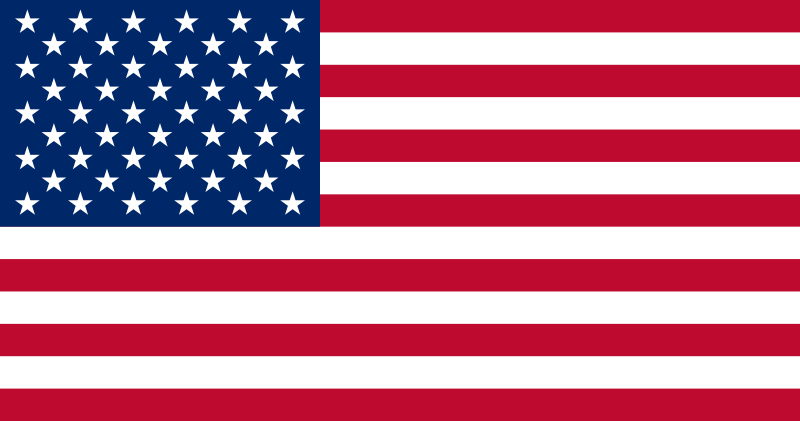
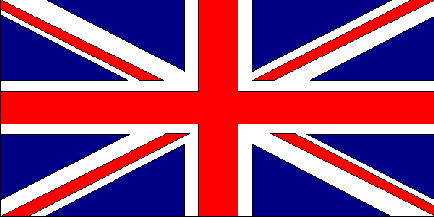
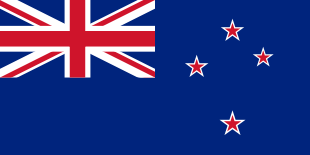
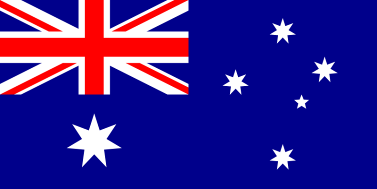
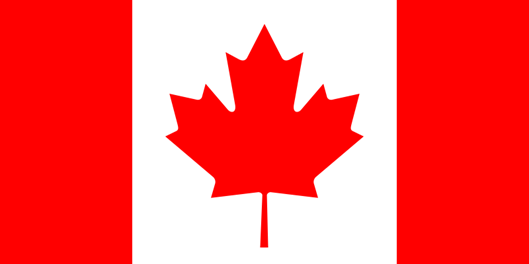
Разработала: Чернега И.О.
учитель английского языка
2012 год
Подтверждение авторства
Пожалуйста, введите ваш Email.
Если вы хотите увидеть все свои работы, то вам необходимо войти или зарегистрироваться
Полезное для учителя
* Свидетельство о публикации выдается БЕСПЛАТНО, СРАЗУ же после добавления Вами Вашей работы на сайт
